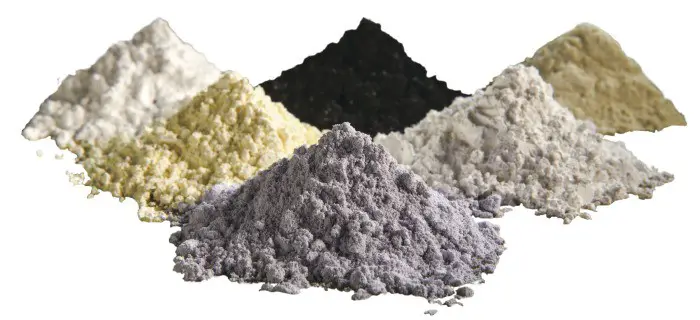Rare Earth Elements (REEs) are a group of 17 chemical elements in the periodic table, comprising the 15 lanthanides, along with scandium and yttrium.
Despite their name, REEs are not particularly rare but are typically dispersed in low concentrations, making them challenging to extract economically.
These elements are critical for various high-tech and green technologies, contributing to their increasing importance in the global economy.
In this article, we will discuss what rare earth elements are, their uses, why they are significant, the challenges associated with their extraction, and the future of rare earths.

What Are Rare Earth Elements?
Rare earth elements consist of the following 17 elements:
- Lanthanides: Lanthanum (La), Cerium (Ce), Praseodymium (Pr), Neodymium (Nd), Promethium (Pm), Samarium (Sm), Europium (Eu), Gadolinium (Gd), Terbium (Tb), Dysprosium (Dy), Holmium (Ho), Erbium (Er), Thulium (Tm), Ytterbium (Yb), and Lutetium (Lu).
- Scandium (Sc) and Yttrium (Y): These two elements are considered rare earth elements due to their similar chemical properties and frequent association with the lanthanides in ore deposits.
Although these elements are relatively abundant in Earth’s crust, they rarely occur in concentrated forms, which makes their extraction and production more difficult compared to more common metals like copper or aluminum.
read also: Detailed Effects of Hail on the Solar Panel Systems
Uses of Rare Earth Elements
Rare earth elements play an essential role in modern technology and industries, particularly in electronics, clean energy, and defense. Some of their key uses include:
- Magnets: REEs like Neodymium (Nd), Samarium (Sm), and Dysprosium (Dy) are used to make powerful permanent magnets. These magnets are essential in products like electric vehicles (EVs), wind turbines, and consumer electronics (e.g., smartphones, speakers, and headphones).
- Batteries: Lanthanum (La) is a critical material in nickel-metal hydride (NiMH) batteries, which are used in hybrid vehicles.
- Phosphors and Lighting: Europium (Eu) and Yttrium (Y) are used in phosphors for lighting and display technologies, such as LED lights, fluorescent lamps, and TV screens.
- Catalysts: Cerium (Ce) and Lanthanum (La) are used as catalysts in petroleum refining and catalytic converters in automobiles, helping to reduce harmful emissions.
- Glass and Ceramics: Rare earth elements are added to glass and ceramics to improve their optical properties and durability. For example, Cerium (Ce) is used to block ultraviolet light in glass manufacturing.
- Defense Technologies: REEs are critical to military technologies, including precision-guided missiles, jet engines, radar systems, and advanced communication equipment.
- Medical Applications: Gadolinium (Gd) is used as a contrast agent in magnetic resonance imaging (MRI) scans, while other rare earth elements are used in specialized medical equipment.
Importance of Rare Earth Elements
REEs are vital for several reasons:
- Technological Advancement: REEs are integral to the functioning of many modern technologies, including smartphones, renewable energy systems, and advanced defense equipment. Their unique properties enable the miniaturization and enhancement of these technologies.
- Green Energy Transition: Rare earth elements are crucial for the development of renewable energy technologies, such as wind turbines and electric vehicles. The increasing global emphasis on reducing carbon emissions and transitioning to clean energy makes REEs a key component of the green revolution.
- Strategic Value: Due to their importance in defense and communication technologies, REEs hold significant geopolitical value. Countries with control over rare earth resources can influence global supply chains and exert strategic pressure.
Challenges in Rare Earth Extraction and Production
Despite their importance, several challenges surround the extraction, production, and supply of rare earth elements:
- Geopolitical Concerns: China is the dominant global producer of earth elements, controlling over 70% of the world’s supply. This dominance raises concerns about supply chain security and potential restrictions, which could disrupt industries reliant on REEs in other countries.
- Environmental Impact: The extraction and processing of earth elements can have significant environmental impacts. Mining operations often involve the use of toxic chemicals, leading to soil and water contamination. Additionally, the disposal of radioactive waste materials, which are sometimes present in REE deposits, poses environmental and health risks.
- Economic Viability: The low concentration of earth elements in the Earth’s crust makes their extraction costly. Moreover, separating the various REEs from each other during processing is technically challenging, further driving up production costs.
- Technological Dependence: Many industries, including electronics, energy, and defense, are heavily dependent on a steady supply of rare earth elements. Any disruption in the supply chain could impact the production and development of critical technologies, highlighting the need for alternative sources or substitutes for REEs.
Future of Rare Earth Elements
The demand for rare earth elements is expected to grow as technologies like electric vehicles, renewable energy systems, and advanced electronics become more widespread. Some of the trends shaping the future of REEs include:
- Exploration of New Sources: Governments and companies worldwide are exploring new sources of earth elements to diversify supply chains and reduce dependence on dominant producers like China. Countries such as the United States, Canada, and Australia are investing in rare earth mining projects.
- Recycling and Reuse: Recycling earth elements from old electronics, magnets, and batteries is an area of increasing interest. While recycling REEs is technically challenging, advancements in extraction methods may make this a viable option to supplement primary production.
- Substitute Materials: Research is being conducted to develop alternative materials that can replace earth elements in certain applications. For example, scientists are working on creating more efficient and powerful magnets that do not require REEs, which could help reduce demand.
- Environmental Improvements: There is a growing focus on making rare earth element extraction and processing more environmentally sustainable. Companies are developing cleaner extraction technologies to reduce the environmental footprint associated with REE production.
Conclusion
Rare earth elements are indispensable for many high-tech and green technologies, making them increasingly important in the modern world.
While challenges exist, including geopolitical concerns and environmental impacts, efforts are underway to ensure a stable and sustainable supply of REEs.
As demand grows for electric vehicles, renewable energy systems, and advanced technologies, the significance of elements will only continue to increase in the coming years.






